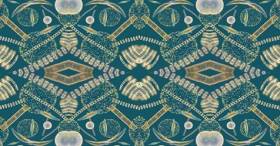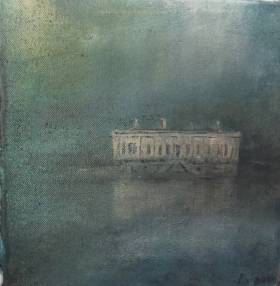Displaying items by tag: Art Exhibition
#MarineWildlife - Internationally published artist Karen Ingham will be holding an exhibition at Milford Waterfront, south Wales later this month depicting the impact human activities are having on the planet’s ecosystem.
The exhibition ‘Deluge’ to be staged between 14th- 28th August, will use photography, film and digital textiles. It will feature microscopic imagery and structures of plankton, the behaviour of pollinating insects and the movement of the oceans, highlighting the interconnections of the local and global environment.
Professor Karen Ingham is a Professor of Art, Science and Technology Interactions, an Honorary Interdisciplinary Research Fellow at Swansea College of Art UWTSD and an Honorary Fellow at Swansea University Medical School.
Tourism Manager at the Port of Milford Haven Karen Lewis is delighted to be welcoming Karen to Milford Waterfront, commenting “To have such a highly acclaimed artist exhibiting here is a privilege. The pieces are truly unique and I’m sure lots of visitors will be admiring her work over the next couple of weeks.”
Karen Ingham is looking forward to the exhibition at Milford Waterfront. She said “2018 is the Year of the Sea in Wales and Deluge responds to this by introducing a new body of work that relates the crucial role plankton plays in stabilising oceanic temperatures and climate change. Collaborating with Swansea University I’ve concentrated on phytoplankton which is used as a living dye and applied to digital fabric designs and prints in order to create a kind of organic time lapse. Phytoplankton is light sensitive and the subtle colours change and break down over time. In this way they act as a kind of allegory for what is happening globally in our seas and oceans.”
The Deluge exhibition takes place between 10am-4pm Monday to Saturday in the Link Building, 8 Temeraire House, Milford Marina, SA73 3AF.
Entry is free and booking is not required.
#HarbourArt - At the end of this month the Dun Laoghaire Harbour Company are to mark the 200th anniversary of the laying of the first stone of the Harbour in 1817.
This is to take place on Wednesday 31st May when President D Higgins will officially open a busy 6 months programme of art, drama, food and historical events about the harbour town that in 1821 was renamed Kingstown. This was to honour the visit of King George VI during the harbour's construction.
Contemporary Harbour Art Exhibition
Launching today, Tuesday 16th May the Gallery Dalkey presents an exhibition (in Dun Laoghaire at the Ferry Terminal building). The exhibition is been held in conjunction with the Dun Laoghaire Harbour Bicentenary Group to commemorate the historic year.
Peter Pearson, a local historian, author and artist involved in the Bicentenary celebrations will feature pieces from his collection since the 1970’s. The Maritime aspect of Dun Laoghaire, its Harbour seafront, sailing boats, yachts and car ferries remain a lifelong influence for Peter.
Other artists showing will be Yvonne Moore, Mary O Connor, Keith Dixon, Sonya Kinch, Rod Coyne, Brigitte McGovern, Leonard Sexton, John Short, Maureen Boalch, Tania Tsaryk, Denise French & Jacqueline Holohan.
Speaking about the summer of events ahead, CEO of the Dun Laoghaire Harbour Company, Gerry Dunne, said: “This Contemporary Art Exhibition is one of over 25 free events taking place to commemorate our Bicentenary year.
We welcome members of the public to get involved and find out more by logging on to dlharbour200.ie”
The Exhibition will continue at the Ferry Terminal, St. Micheals Pier until Sunday 5th June. Opening times: 11:00 – 17:30 (Closed Mondays)
Entry is free and open to the public. Paintings are available for sale.






























































